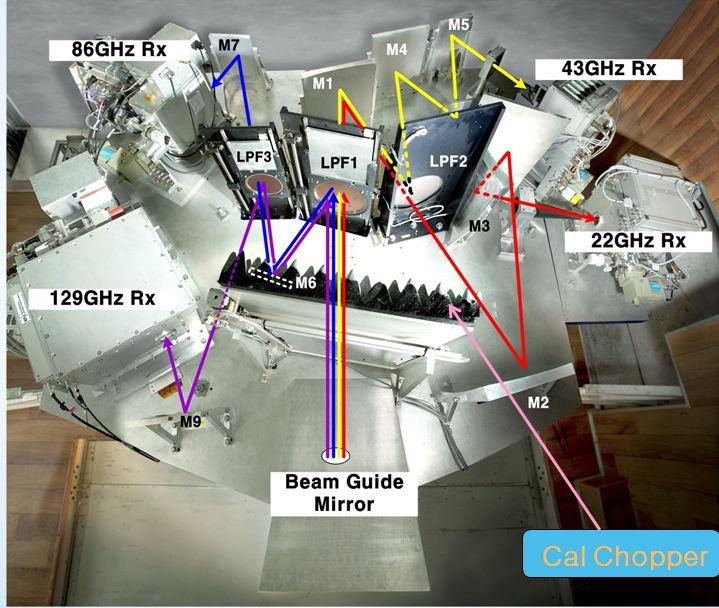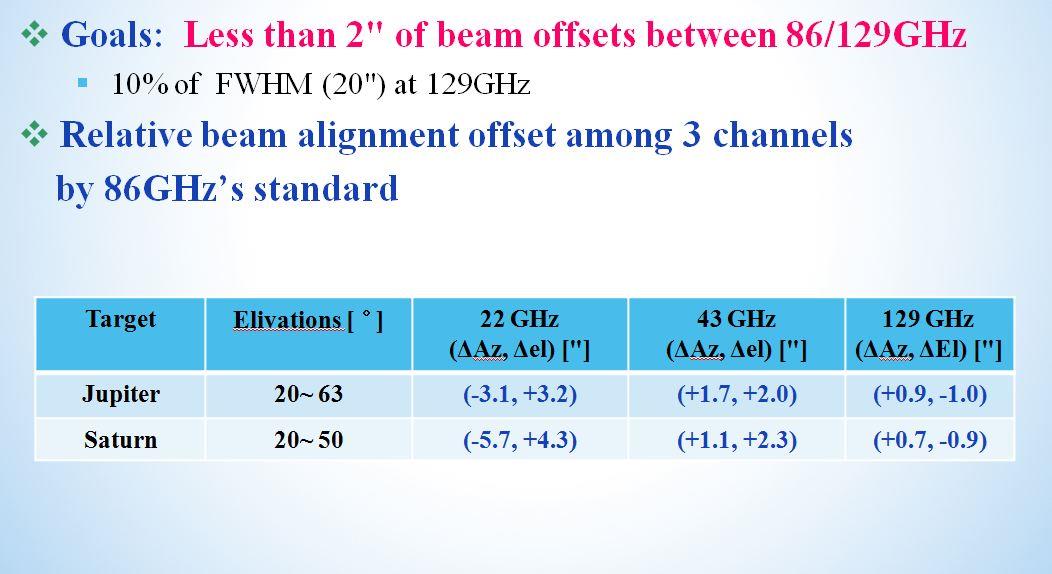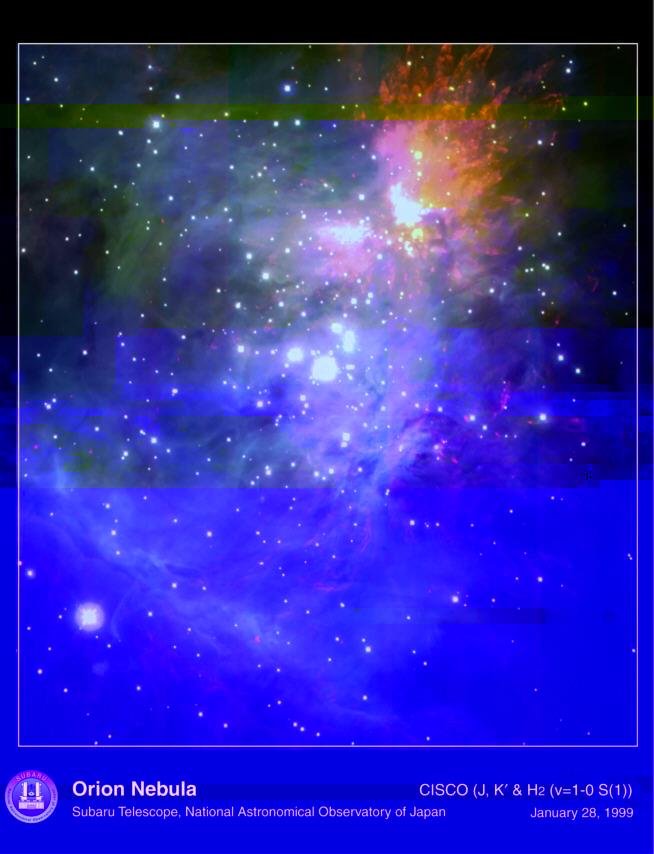Success with KVN Multiplexer
Both group companies were very
pleased to get this Email from
Dr Han at the Korean Astronomy
& Space Science Institute
Dear Richard,
I have so much remarkable good news!!!!
We have successfully done simultaneous observation system for four channels
such 22GHz, 43GHz,86GHz and 129GHz for KVN(Korean VLBI Network).
You can see it and its test observation results in attached file.
We have to make two system more for remained two stations of KVN.
It should be terminated until the end of this year.
I thank you for your wonderful performance quasi-optical components.
Warmly,
Seog-Tae
along with the following images showing the optics (mirrors and feed horns)
that TK has provided and the multiplexing filters supplied by QMC Instruments.
The multiplexer allows simultaneous measurements at 4 frequencies - 22, 43, 86 and
129 GHz from a set of intereferometrically linked radio telescopes in Korea.

Dr Han and his colleagues have achieved their co-alignment goals:

And here are some 4 frequency measurements on the Kleinman-Low (KL)
nebula in Orion, looking at transitions lines formed by masers formed by SiO and Water

The following stunning image and comment is taken from the Japanese Subaru telescope
in Hawaii:

A false-color infrared image by the Subaru Telescope of the
ORION NEBULA (Messier 42) 1,500 lightyears from Earth. The
group of four bright stars at the center of the image are
known as the Trapezium. Many bright spots around the
Trapezium are young stars embedded in the Orion molecular
cloud behind the Orion nebula. Above the Trapezium, a
butterfly-like red feature is the Kleinman-Low (KL) nebula
deeply embedded in the Orion molecular cloud. At the center of the
KL nebula is a forming star named IRc2. It may be 30 times more
massive than our Sun. Blue, faint, diffuse emission
over the entire region is hot gas ionized by ultraviolet radiation
from the Trapezium stars.
The KL nebula can be seen in more detail here